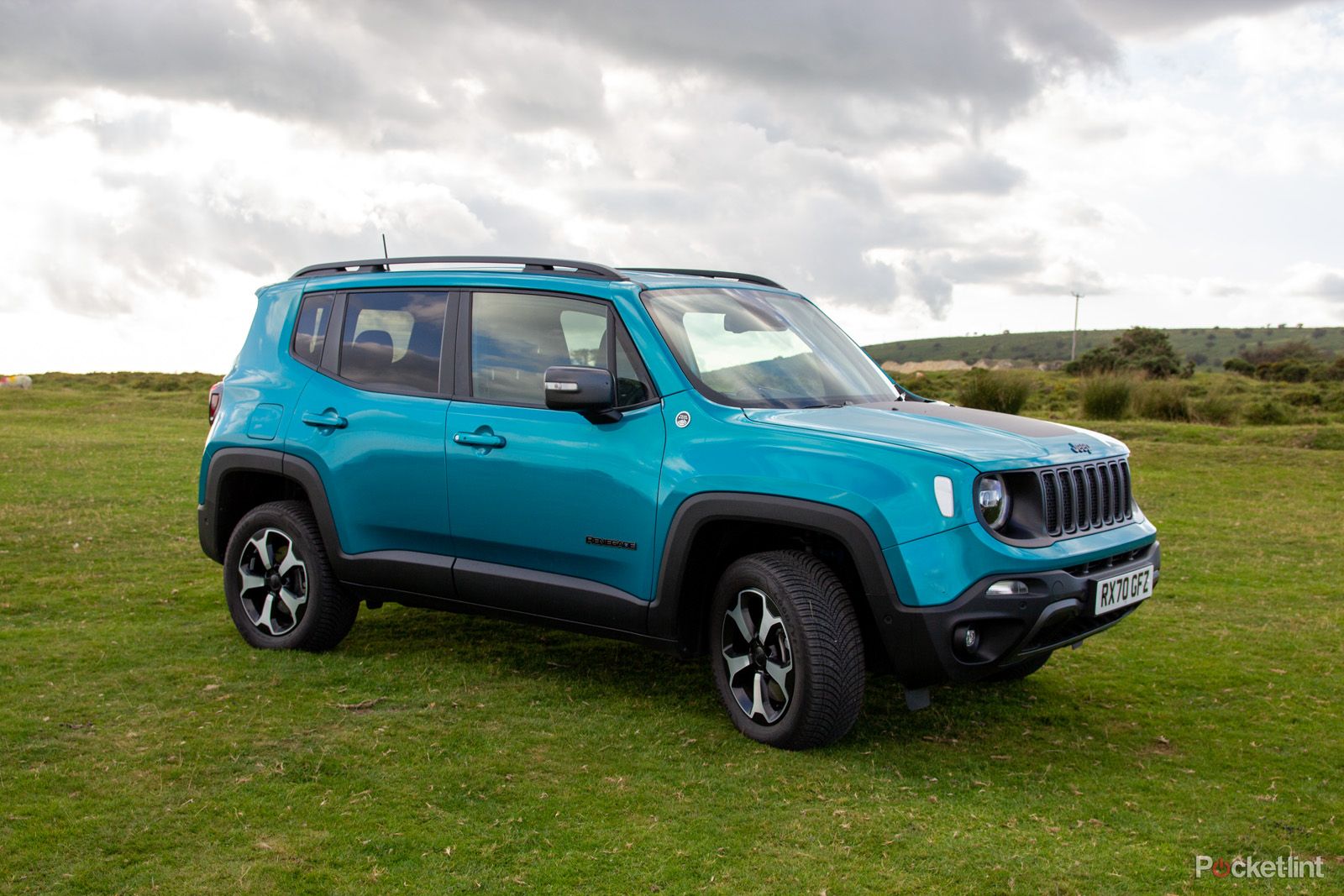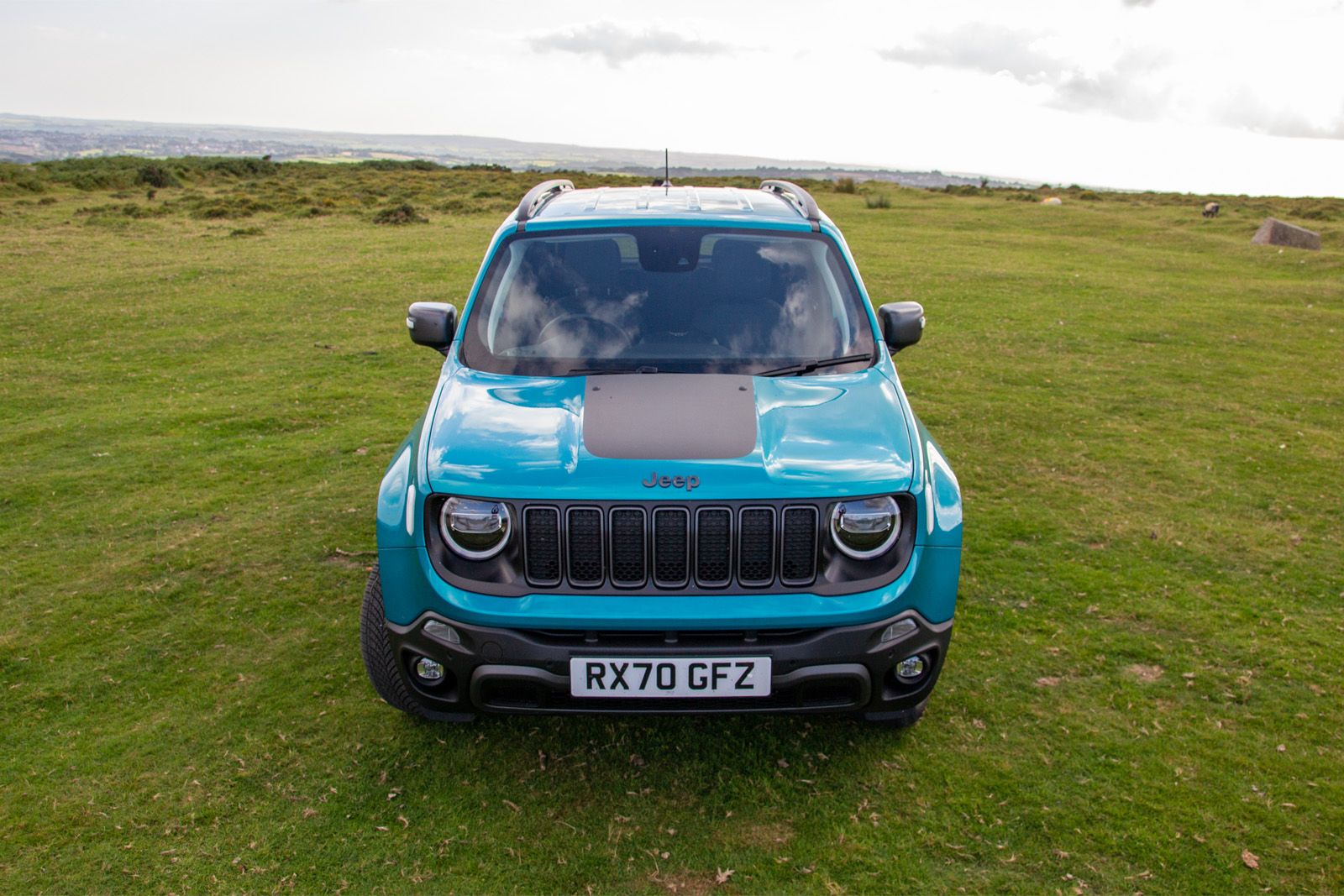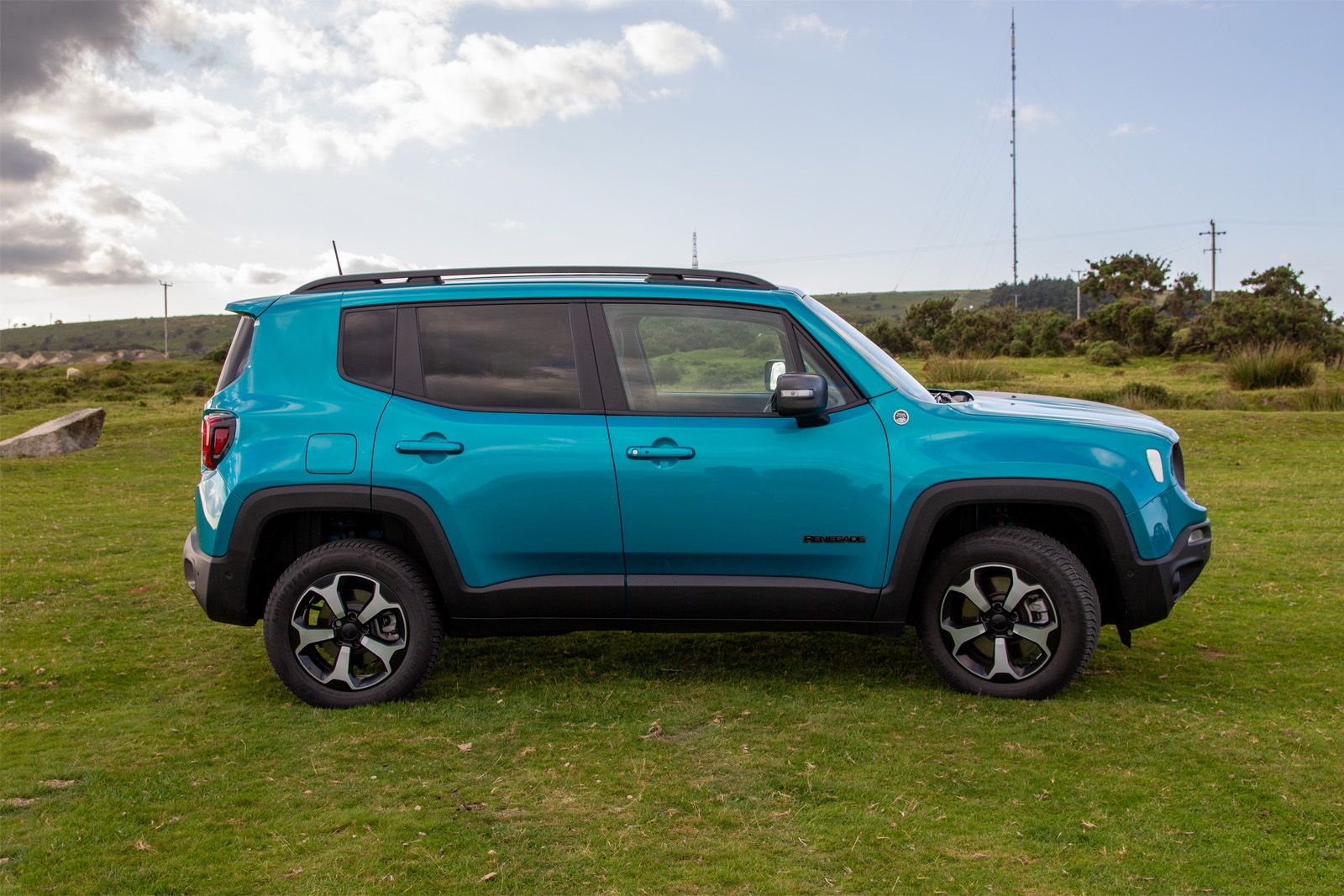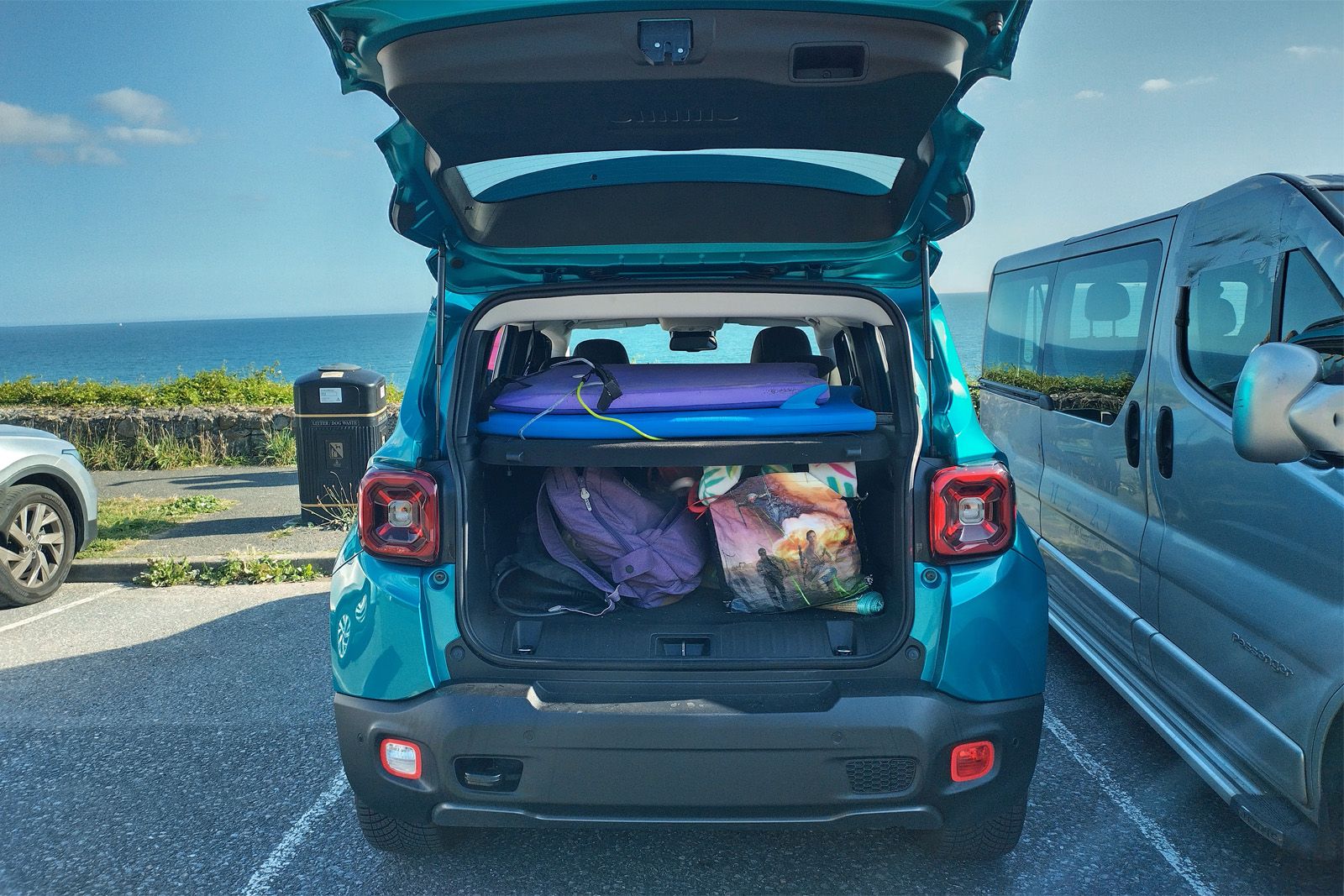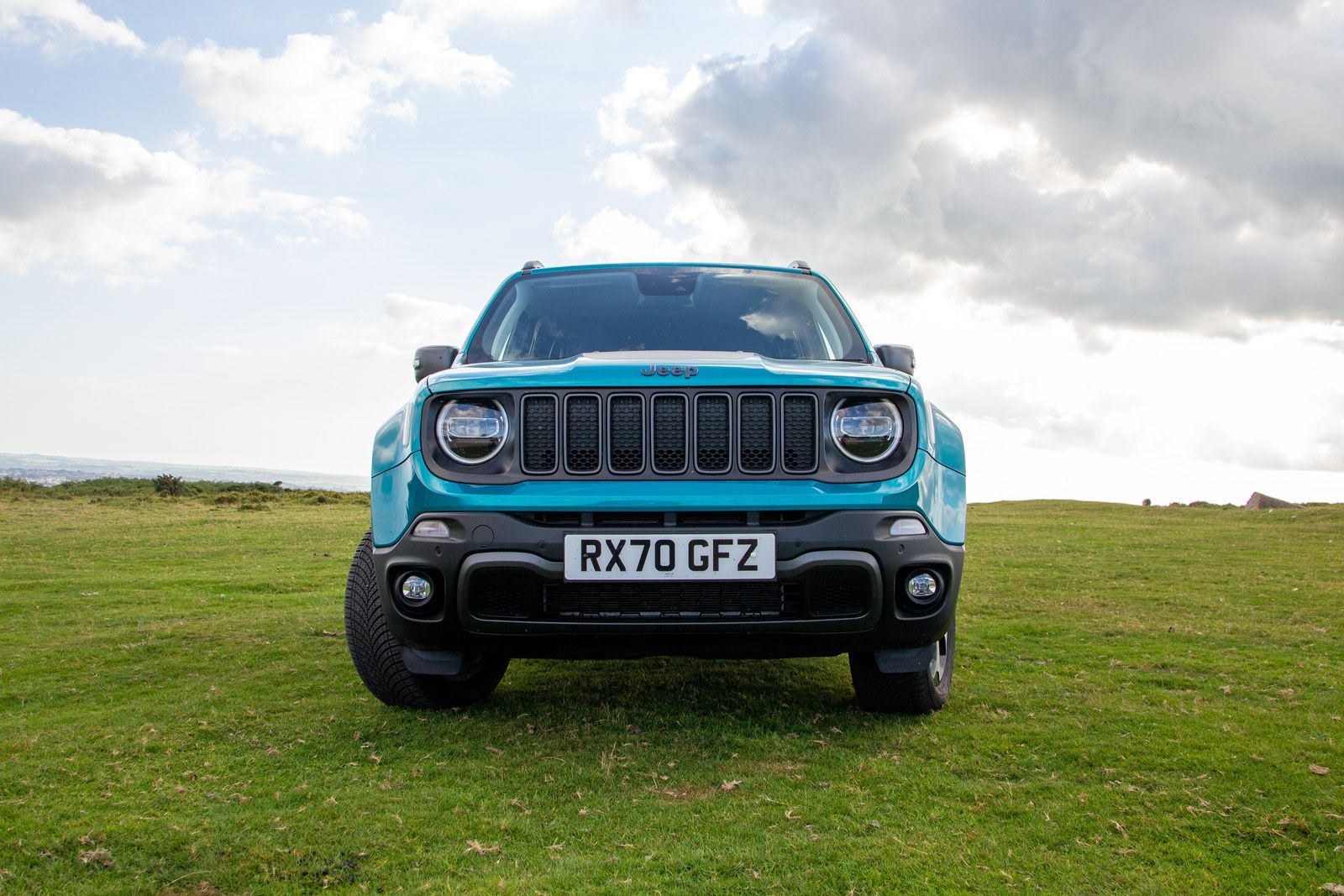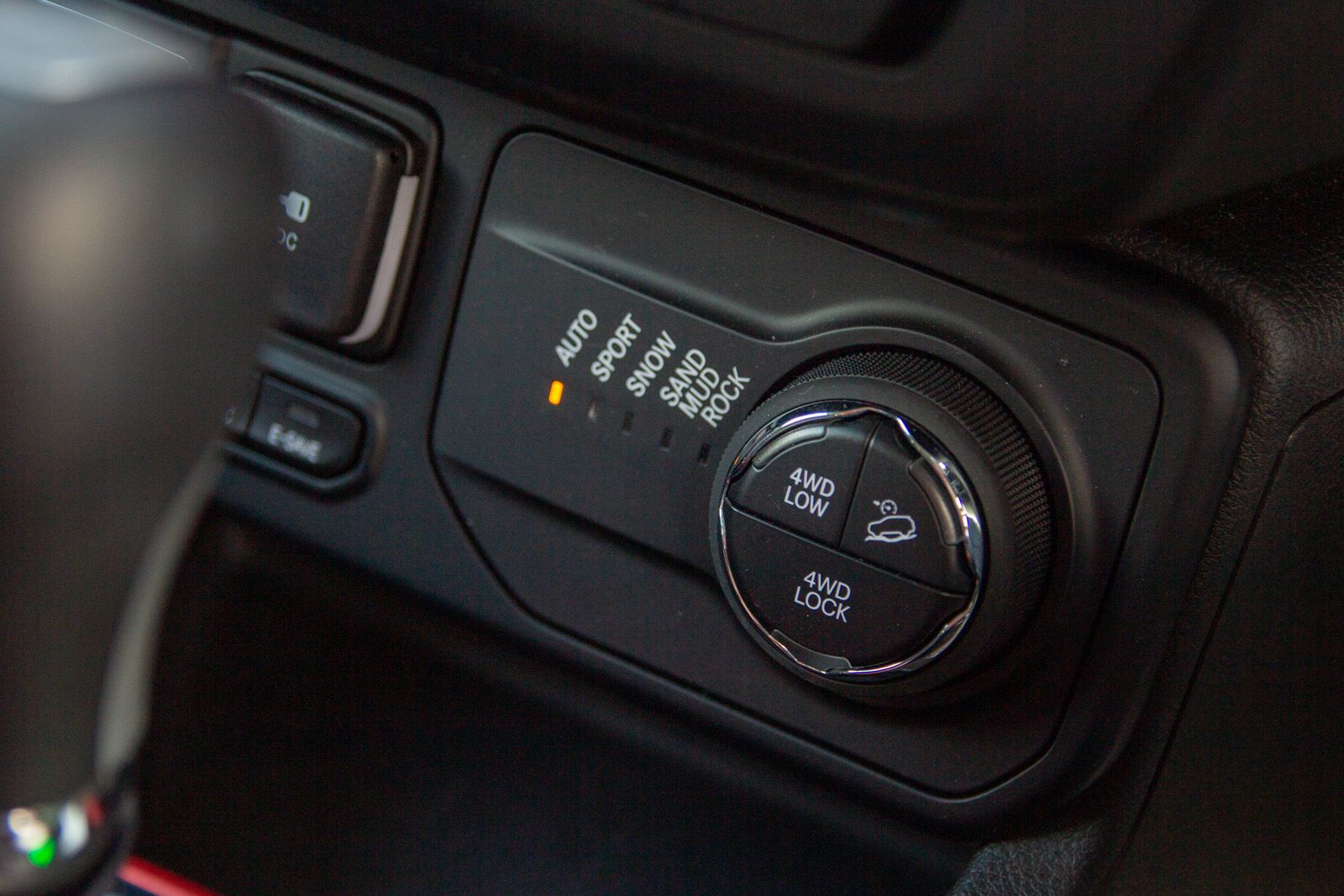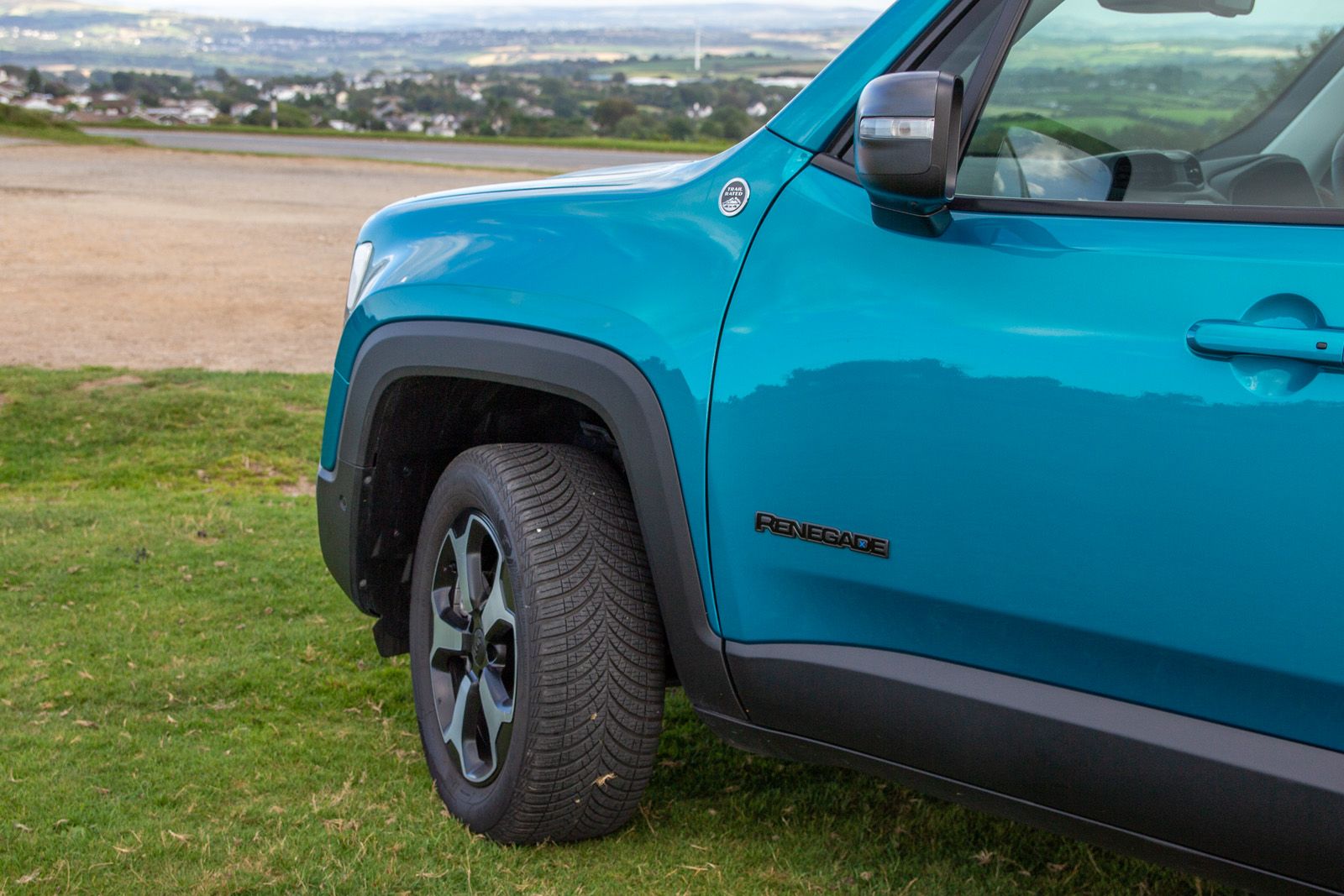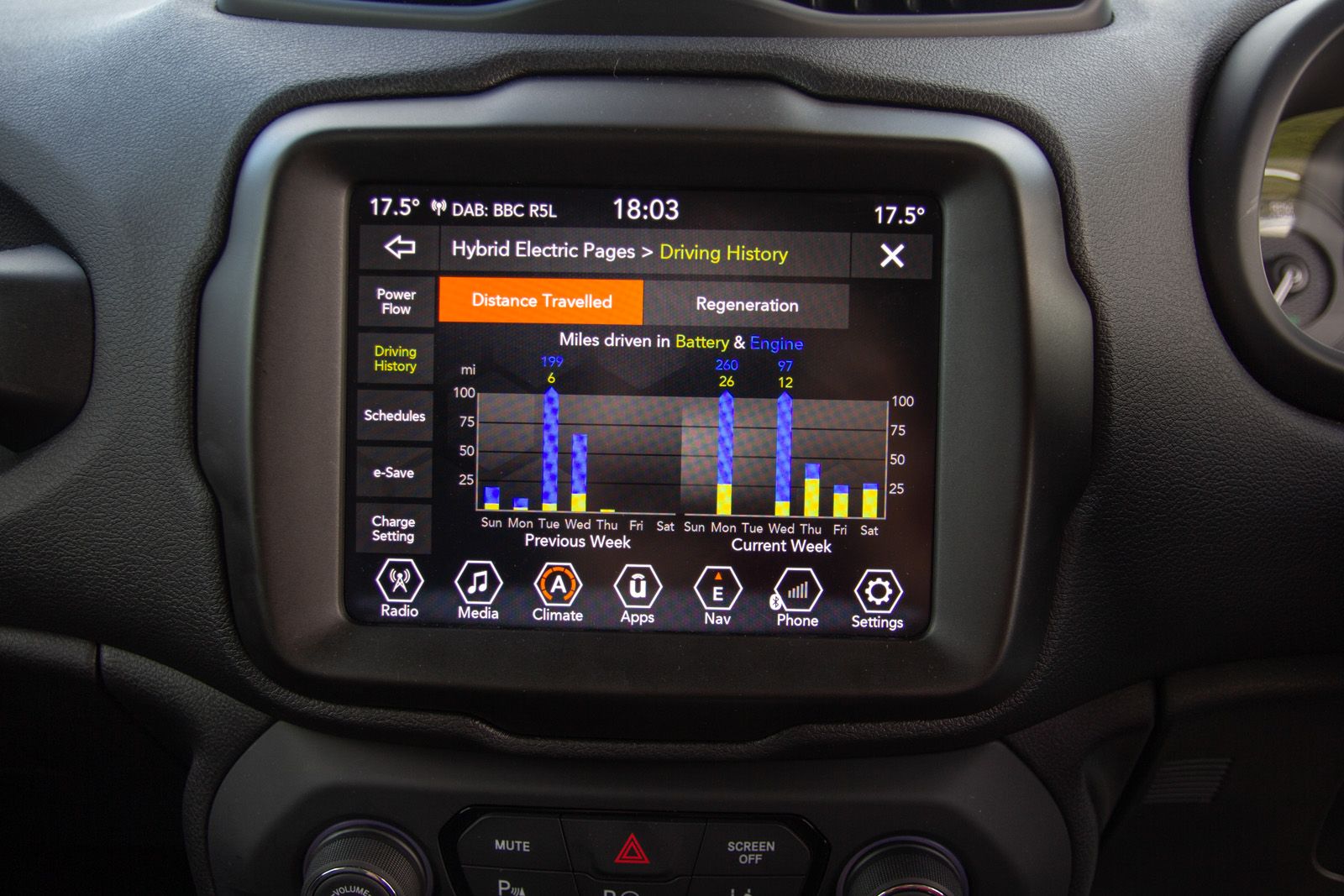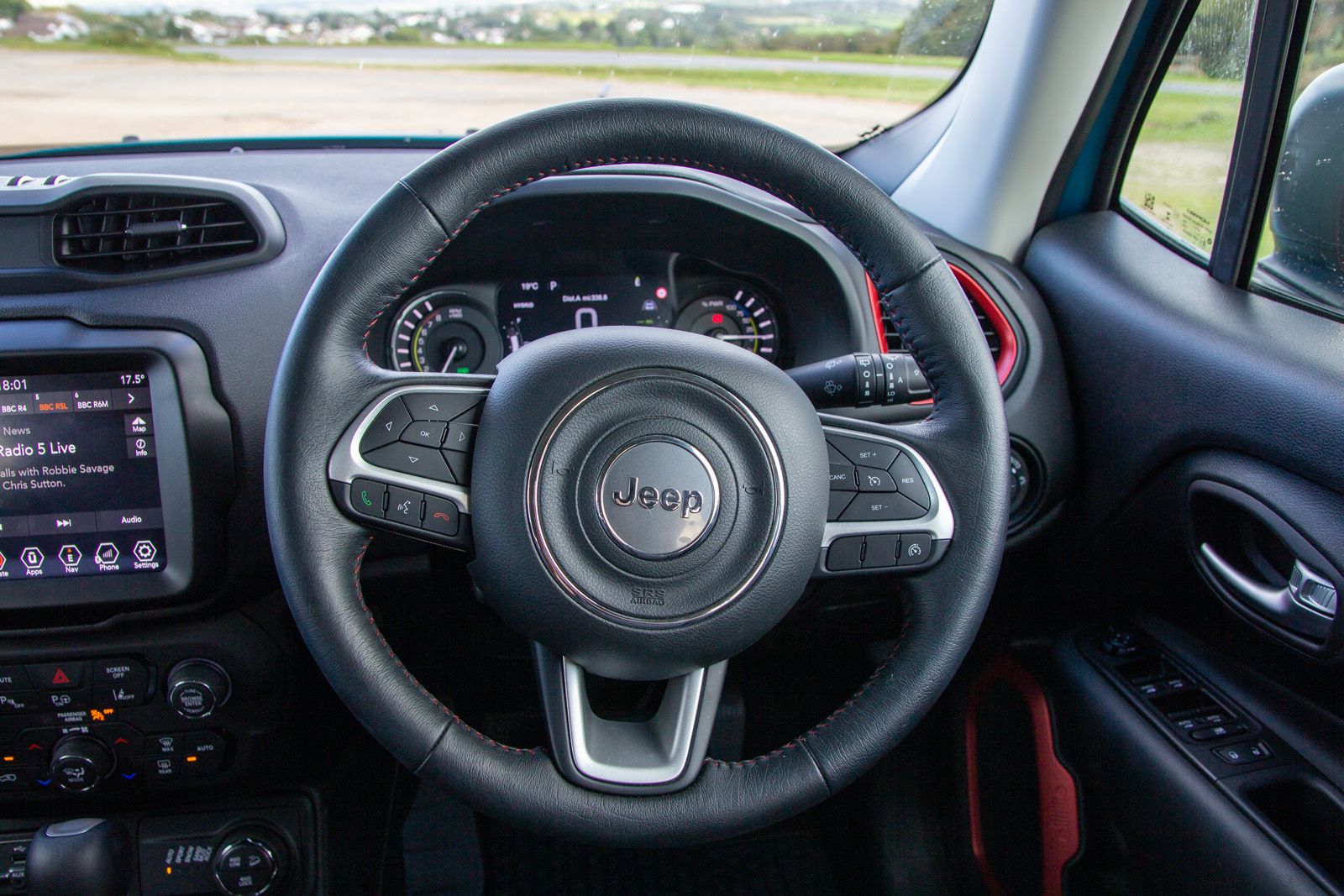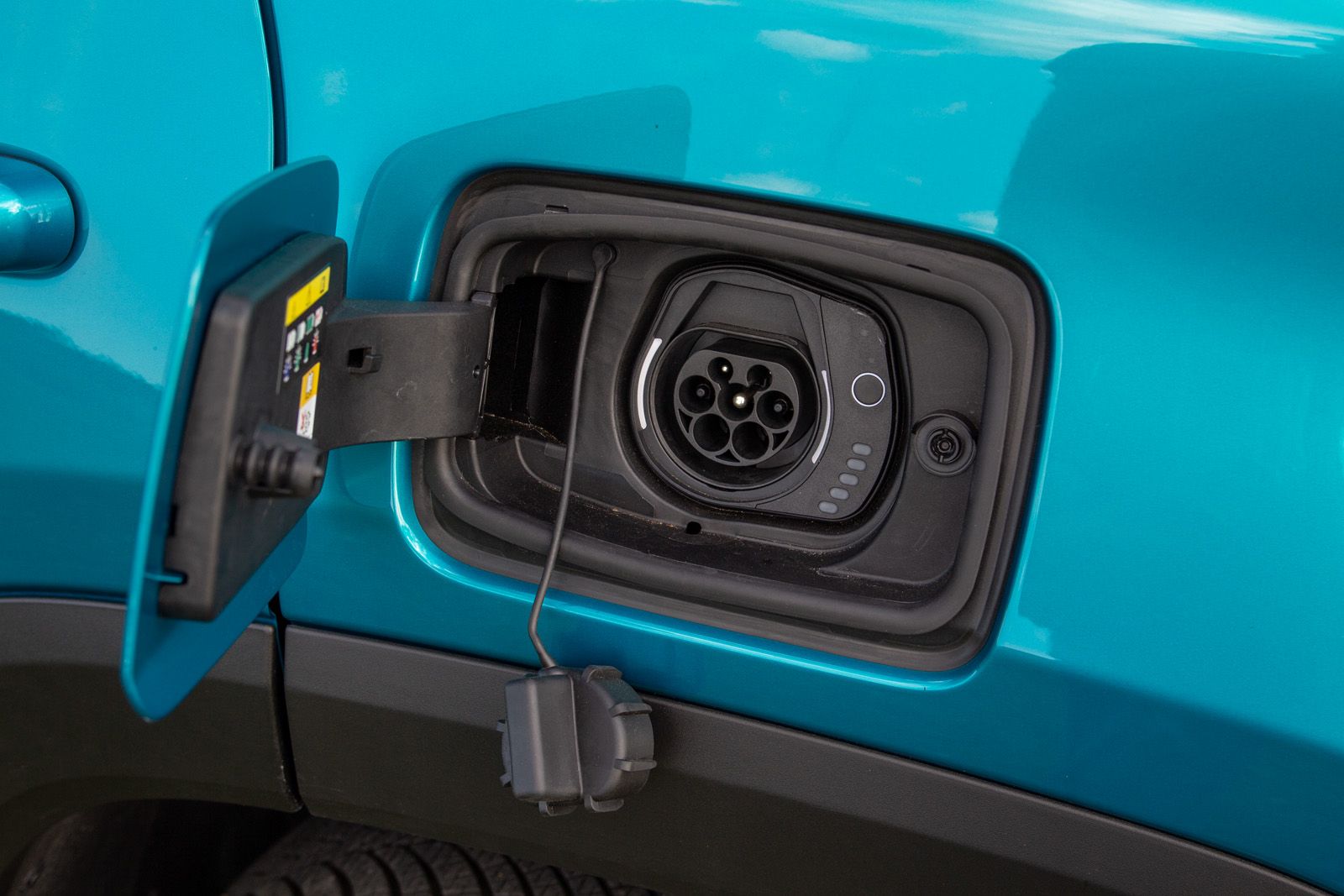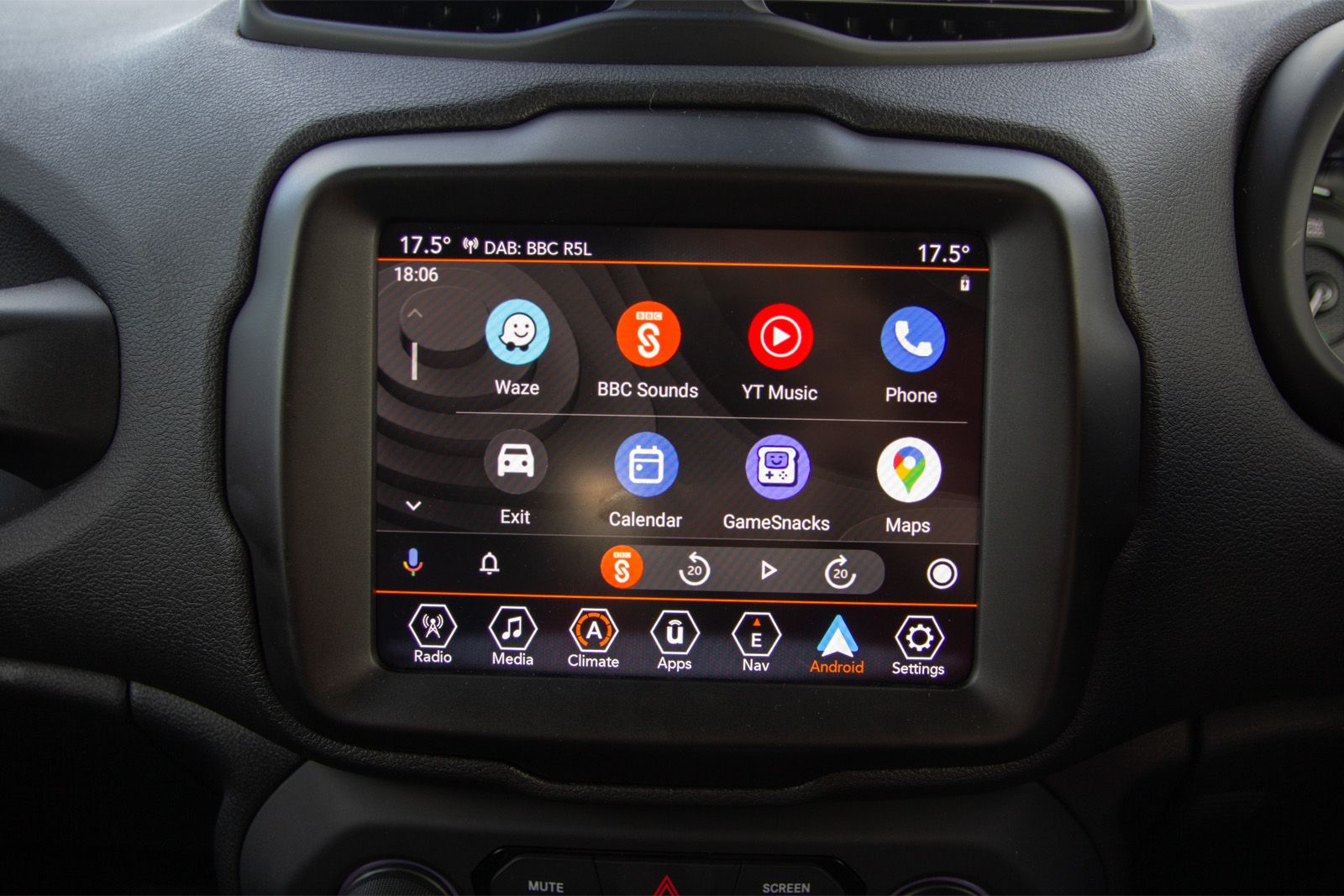The Renegade is the baby of the Jeep family, carrying that distinctive grille and boxy looks, giving compact SUV style while retaining some of that off-road capability associated with Jeep.
The Renegade is, however, in its basic form, a front-wheel drive vehicle, with all-wheel drive (AWD) reserved for some of the higher power engines in the past. That baton is now passed to the 4xe, which can not only boast electrification, but AWD too.
Our quick take
As a step into electrification, plug-in hybrids have something to offer, with a usable short range electric driving experience. Once you start charging it and using it, 31 miles will cover a huge amount of daily tasks - shopping, commuting, driving to the station, the school run - without a drop of petrol being used.
Having a small fuel tank here, however, and therefore a 300 mile combined range, is a compromise - so a great long-range cruiser this Jeep really isn't.
There's fun to be had with the Jeep Renegade: it's a distinct compact SUV with some true off-road capabilities in the Trailhawk that other plug-ins simply lack. The 4xe does come at a premium, though, so the real question is whether you're going to sensibly make the most of its electric range on a daily basis to make it actually worthwhile.

Jeep Renegade 4xe - 4.0 / 5
| FOR | AGAINST |
|---|---|
|
|
Tonka toy looks
The Jeep has always been iconic, and while the Wrangler still carries much of what made this brand attractive to a lot of people, the softer-looking SUVs still carry some of those charms. The Renegade has an interesting proportionality, with a strong boxy look from the front, wheels planted close to the corners, and a high roof and ride height.
The rear of the Renegade takes some looking at though - no matter how often we look at the hind quarters of the Renegade, it always seems a little abrupt, like it should be a little longer. There are advantages to it being shorter - it's easier to park for one - while the big hatch rear door means you can shelter from the rain while changing out of your muddy walking boots.
In many ways, the 4xe reminds us of the Kia Soul, and we definitely think it looks better with larger wheels, because there's no escaping the toy-like looks.
The boot itself has a capacity of 330 litres, which isn't huge and firmly cements the Renegade as a compact SUV.
The Renegade also offers a range of exciting colours and given its chunky looks, we're of the mindset that something with pop shows-off this car better, like the so-called Bikini paint on our review model.
Paired with the Trailhawk trim, which adds that black stripe to the bonnet and 17-inch wheels (which come with mud and snow tyres), there's a gulf of space in that wheel arch allowing for plenty of travel, so this thing will actually go off-road too.
Interior comforts
The high ride height of the Renegade will certainly appeal to a lot of drivers, given that SUVs being so popular. But while many SUVs are pretending to be hatchbacks, the Renegade at least feels a little more utilitarian - and there's appeal in that.
Once you slip into the interior there's good knee space for the rear seats and plenty of head room, but it does feel as though this car is stacked a little tall - the space is mostly above you.
You can seat three across the back row, but the middle seat is a little cramped. The front seats are comfortable, though, featuring leather trim and red stitching, while much of the rest of the cabin uses dark hard or soft plastics in many places.
The utilitarian feel continues with a huge grab-handle in front of the front passenger, while the centre of the car sees a rather small (by modern standards) infotainment display.
The interior layout is a little odd really - it feels like there's a lot of space in front of the dash, made more noticeable by the boxy design. Still, we found it perfectly comfortable for long drives with plenty of adjustability in the seats, good visibility and a layout of controls that's mostly practical and easy to understand.
The steering wheel has plenty of buttons, which sees cruise control and driver display controls on the face, pushing the volume controls and media source and select buttons to the rear of the steering wheel. It's a simple solution - and while you never see these buttons, it only take a few moments to get used to them.
Note that despite the high specification of the Renegade 4xe Trailhawk, it doesn't have adaptive cruise control - that's on the Limited trim - instead it only offers regular cruise control. The Trailhawk is more pitched at off-road adventures, while the Limited offers some more on-road comforts instead.
How the hybrid system works
What makes this 4xe system different to the conventional combustion models is the addition of the 11.4kWh battery and the electric motor which drives the rear wheels. With the engine driving the front wheels and the motor available for the back wheels, you get your all-wheel drive (AWD) system through a combination of both.
That means driving on electric only powers the rear wheels, while driving on the engine only powers the front. There are driving modes to manage what happens: Hybrid using both sources as needed; Electric using just the battery; and E-Save letting you either save the charge (i.e. motor only) or use the motor to also charge the battery while you're driving.
This is a fairly standard configuration for hybrid cars, but with terrain modes also offered on the Trailhawk trim, when you need all-wheel drive (or if you choose to engage the 4WD Lock) the engine can provide the power to the battery to drive electric motor too - you don't have to have a fully charged battery.
Basically, you can always access that AWD if you need it, regardless of the charge state of the car.
On the Trailhawk version of the car there's a terrain selection option so you can tell the car you're driving in snow, mud or over rocks, with descent control and a low range option too, so you don't just spin those rear wheels. Most, we suspect, will stick to Auto.
Driving and performance
The power in the Trailhawk amounts to some 240bhp. Of that, the 1.3-litre petrol engine provides 180bhp and the electric motor 60bhp. On the lower trims, the petrol engine output is slightly reduced at 130bhp, for a combined 190bhp. We haven't driven those, so the experience might be slightly different to the Trailhawk.
In Hybrid mode, the Renegade 4xe drives rather nicely though. As long as there's charge in the battery, it will use a combination of the engine driving the front wheels and the motor driving the rear wheels to give you the power when you need it.
Accelerate up a hill and you'll hear the engine spark up to provide that additional power, before going back to sleep again as you crest the summit and less power is needed.
Usually, it will default to electric power when you pull away from the lights. Indeed, if you have full charge, the Renegade 4xe will essentially drive on electric until the charge hits three per cent, at which point it's running on the engine alone.
The actual electric range from that 11.4kWh battery is about 31 miles, but that varies a little depending on how you drive and the conditions you drive in, including regeneration.
You might dismiss the 31 miles of range, but that figure is based on average commute distances, the idea being that all your short journeys can be electric without the need for the engine at all, recharging the car when you're parked at home or at the office.
By default the regeneration to auto-charge the battery is a little light, but there's a button next to gear stick to engage "max regeneration" which gives a stronger braking effect when you lift off the accelerator, and we prefer this mode.
On the motorway or longer drives the electric charge will just use itself up, leaving you with a 1.3-litre Jeep, which can feel a little under powered. This really shows itself when you come to a steeper hill, when there's a noticeable and noisy increase in engine speed and stepdown through the autobox - it really misses the electric motor in these conditions.
In suburban driving that's unlikely to be a problem, but it's noticeable if you want to take the Renegade 4xe further afield. Also noticeable is the smaller fuel tank. There's only a 35-litre tank compared to 48-litres on the regular versions - and that means the maximum range is about 300 miles from a full tank and a fully charged battery. Arguably, for a price not too far off, you could go full electric and have similar range (but not with any sort of off-road skill).
Giving a useful figure for miles per gallon (mpg) depends so much on how often you charge the car and how far you drive. Covering about 340 miles in a week, we got an average of 46.8mpg, but that's comprised of 110 miles of electric and 230 miles from petrol. On the motorway, once the electric has gone, you're looking at just over 30mpg. As with any plug-in hybrid, if you're not charging it, you're not doing it right.
Elsewhere the steering is light and the suspension soft, which will soak away a lot of lumps and ensures there's fewer jolts should you drive off-road, but faster cornering and hard braking will see the Renegade bobbing around on its springs. Still, it's easy to drive and the high ride height and good visibility will have appeal for many drivers.
As a plug-in hybrid, there's a Type 2 socket on the rear left, allowing you to plug in and recharge in about four hours from a domestic socket. It will charge at up to 7.4kW, and that will give a quicker charge from a public charger or wallbox.
Interior tech
The interior tech centres around the centre of the driver's display, which is customisable so you can change what information is shown in various areas, while also letting you access a wide range of information on the drive - and flanked by two traditional dials, one for revs (RPM) and one showing your power output or regen charge. It's not the most advanced or graphically refined display, but there's no problem accessing much of the information that's actually useful, so we have no problems with it.
The central display is 8.4-inches and, as we said above, that's a little small by modern standards. It's also set pretty low, so glancing at it for navigation directions, for example, would involve looking down into the car - in contrast to many cars which now have displays mounted much higher and closer to your eyeline.
The navigation comes courtesy of TomTom, with familiar graphics and decent routing, while there's also support for Apple CarPlay and Android Auto, via a cable connection.
Elsewhere you can access useful information, such how much you're driving on the engine and how much on electric. To get the most from your plug in hybrid, you really need to keep it charged and these graphs soon reveal if you're just driving it around like a normal petrol car.
To recap
This Jeep offers a practical electric range for short daily drives, while the electric system also enables the all-wheel drive (AWD) system to give this compact SUV better offr-oading skills than many rivals. But to get the most from it, you'll really have to keep it charged and the overall range is a little on the short side.

